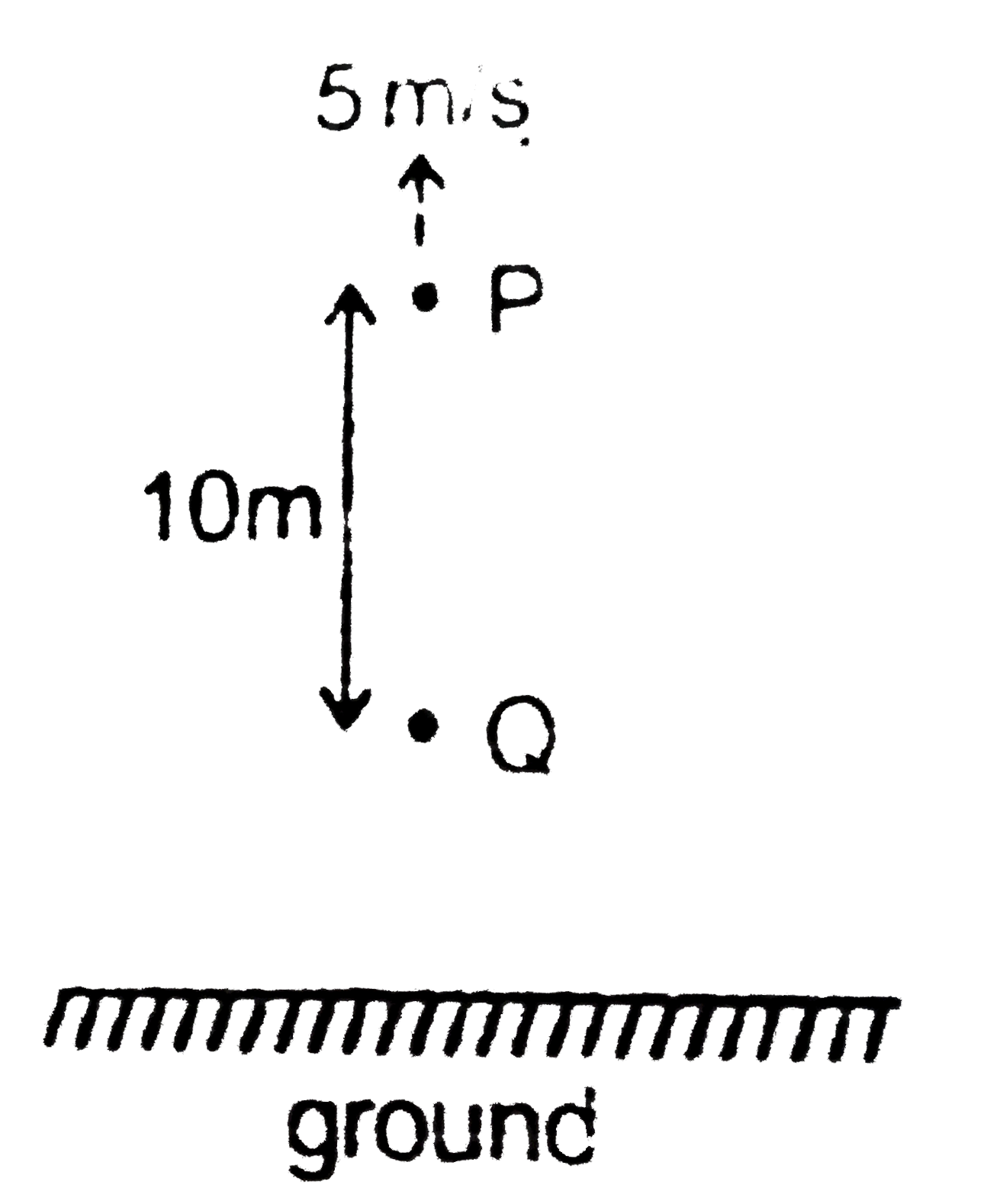A ball thrown vertically upwards with an initial velocity of 1.4m/s. The total displcement of the ball is
22.4cm
zero
44.8m
33.6m
The correct Answer is:B
To solve the problem of finding the total displacement of a ball thrown vertically upwards with an initial velocity of 1.4 m/s, we can follow these steps:
Step 1: Understand the motion of the ball
When the ball is thrown upwards, it will rise to a maximum height and then fall back down to the original position from where it was thrown.
Step 2: Calculate the maximum height reached by the ball
To find the maximum height (h) reached by the ball, we can use the formula:
h=u22g
where:
- u=1.4m/s (initial velocity)
- g=9.8m/s2 (acceleration due to gravity)
Plugging in the values:
h=(1.4)22×9.8
h=1.9619.6≈0.1m
Step 3: Analyze the total displacement
Displacement is defined as the change in position from the initial point to the final point. In this case, the ball starts at a certain height (ground level) and returns to the same height after reaching the maximum height and falling back down.
Since the ball returns to its original position, the total displacement is:
Total Displacement=Final Position−Initial Position=0m−0m=0m
Conclusion
The total displacement of the ball is 0 meters.
---
When the ball is thrown upwards, it will rise to a maximum height and then fall back down to the original position from where it was thrown.
To find the maximum height (h) reached by the ball, we can use the formula:
h=u22g
where:
- u=1.4m/s (initial velocity)
- g=9.8m/s2 (acceleration due to gravity)
h=(1.4)22×9.8
h=1.9619.6≈0.1m
Displacement is defined as the change in position from the initial point to the final point. In this case, the ball starts at a certain height (ground level) and returns to the same height after reaching the maximum height and falling back down.
Total Displacement=Final Position−Initial Position=0m−0m=0m
The total displacement of the ball is 0 meters.
Similar Questions
A ball is thrown vertically upward from the 12 m level with an initial velocity of 18m/s. At the same instant an open platform elevator passes the 5 m level, moving upward with a constant velocity of 2m/s. Determine (g=9.8m/s2 )
(a) when and where the ball will meet the elevator,
(b) the relative velocity of the ball with respect to the elevator when the ball hits the elevator.View SolutionA ball is thrown vertically upwards with a velocity of49ms−1. Calculate :The total time it takes to return to the surface of earth.
View Solution
Knowledge Check
- Question 1 - Select One
A ball thrown vertically upwards with an initial velocity of 1.4 m/s returns in 2s. The total dispalcement of the ball is
A22.4 cmBzeroC44.8 mD33.6 m - Question 2 - Select One
A ball is thrown vertically upwards with an initial velocity of 5m/sec from point P as shown Q is a point 10m vertically below the point P. Then the speed of ball at point Q will be : (take g=10m/s2 and neglect air resistance)
 A7.5m/secB10m/secC15m/secD17.5m/sec
A7.5m/secB10m/secC15m/secD17.5m/sec - Question 3 - Select One
If a ball is thrown vertically upwards with a velocity of 40m/s, then velocity of the ball after 2s will be (g=10m/s2)
A15m/sB20m/sC25m/sD28m/s
A ball is thrown vertically upwards with a velocity of 4.9m/s Find
(i) the maximum height reached by the ball
(ii) time taken to reach the maximum heightView SolutionA ball is thrown vertically upwards with a velocity of 49m/s. Calulate
(i) The maximum height to which it rises,
(ii) the total time it takes to return to the surface of the earth.View SolutionA ball is thrown vertically upward with a velocity of 20 m/s. Calculate the maximum height attain by the ball.
View SolutionA ball is thrown vertically upward with a velocity of 20 m/s . After 3s , the magnitude of its displacement is (take g = 10 m/s2)
View SolutionA ball thrown vertically upward with initial velocity u. Which of the following graphs represent the velocity of ball correctly as function of time?
(Take upward direction as positive)View Solution

